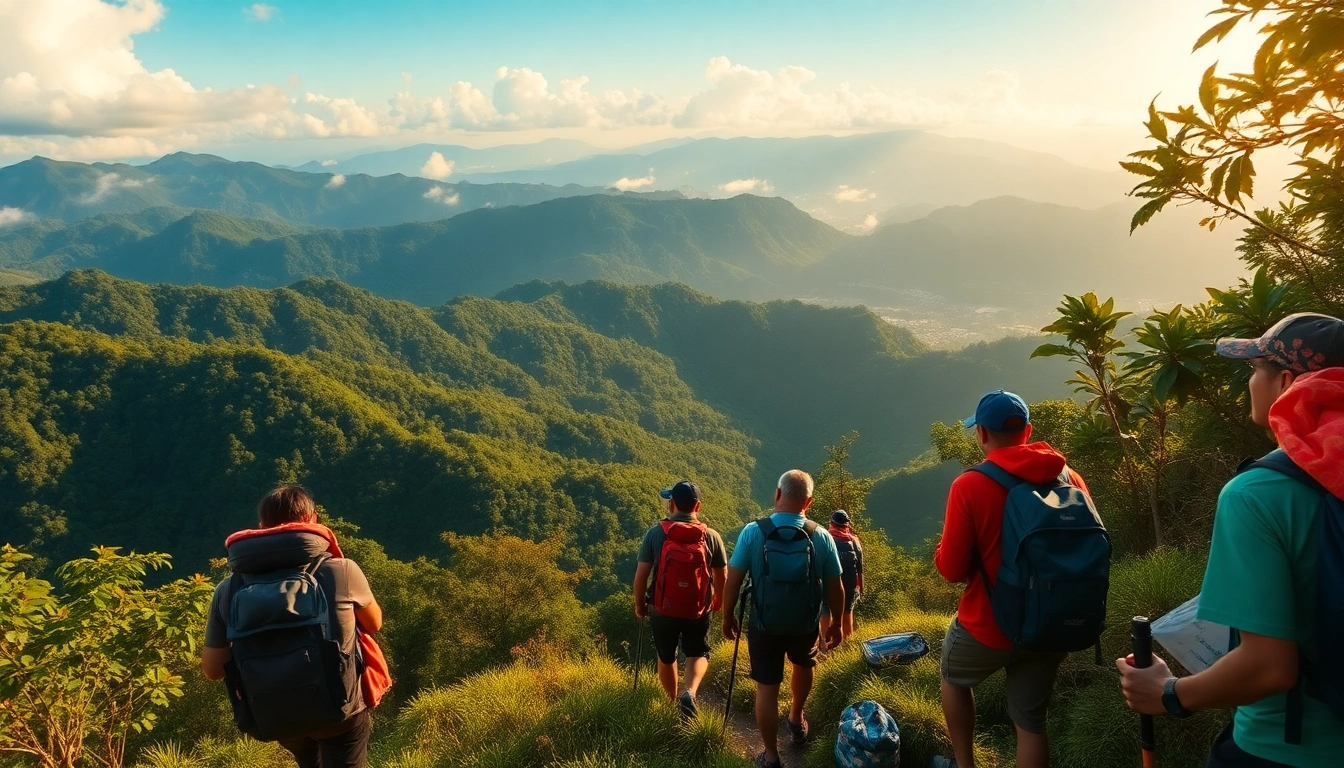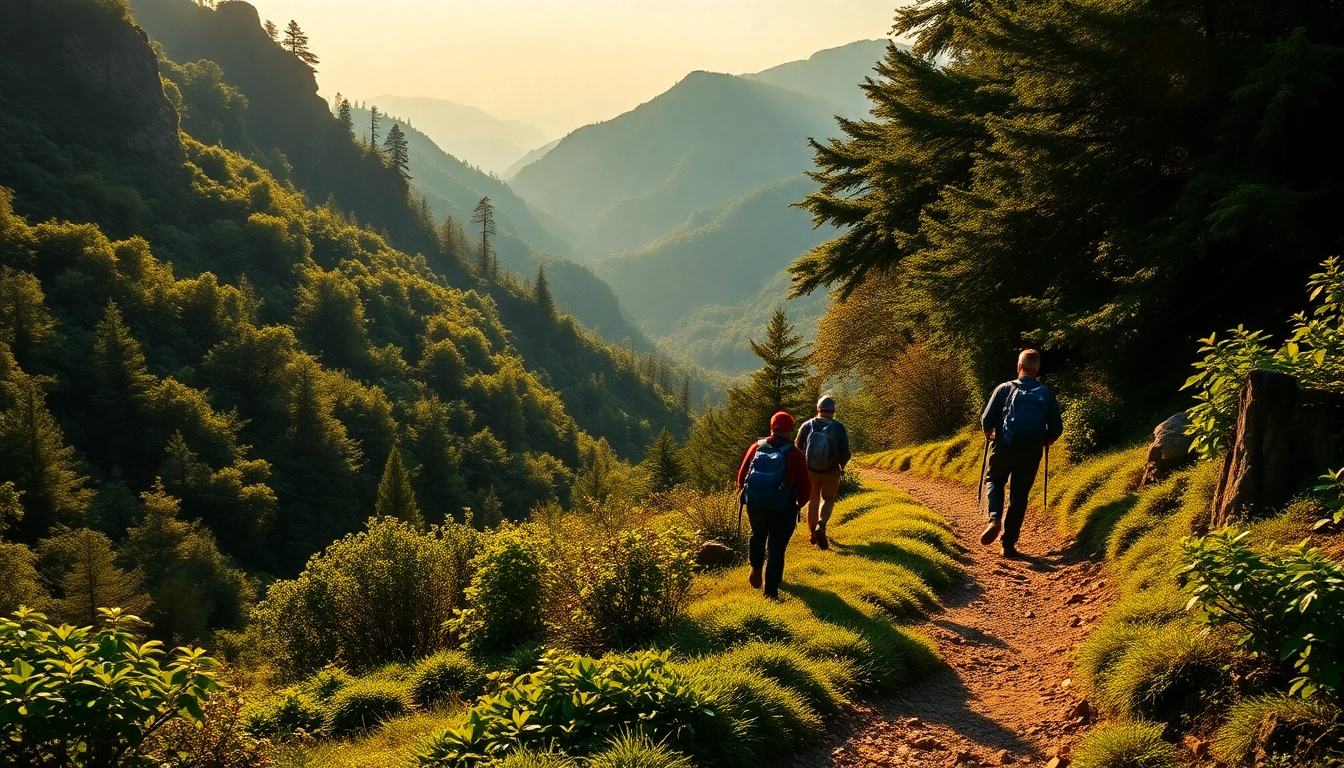Introduction to Trekking in Indonesia
Indonesia, renowned for its stunning archipelago of over 17,000 islands, offers an unparalleled canvas for outdoor enthusiasts and adventure seekers alike. Among the myriad activities available, trekking stands out as one of the most immersive and rewarding ways to explore the country’s diverse landscapes, from lush rainforests and volcanic mountains to pristine beaches and cultural heritage sites. Trekking in Indonesia is not just about conquering physical terrains; it is a journey into the heart of nature and local culture, promising transformative experiences for every traveler.
What makes Indonesian trekking unique?
What sets Indonesian trekking apart from other global destinations is its rich tapestry of natural beauty and cultural diversity. The country’s rugged terrains vary extensively—from the iconic slopes of Mount Rinjani in Lombok to the untouched rainforest trails of Kalimantan, and the mystical volcanic landscapes of Dieng Plateau. Each region offers unique flora, fauna, and geological features, making every trek a different adventure.
Additionally, Indonesia’s indigenous cultures and vibrant traditions are intricately woven into the trekking experience. Trekking routes often pass through traditional villages where travelers can engage with local communities, learn about customs, and taste authentic regional flavors. This cultural integration enriches the trek, transforming it from a mere physical activity into a meaningful exploration of Indonesia’s heritage.
Moreover, Indonesia’s climate, with its tropical and equatorial characteristics, creates lush environments teeming with biodiversity. Trekking here allows explorers to witness exceptional wildlife, rare plants, and scenic vistas that are rarely found elsewhere. The combination of natural wonders and cultural encounters makes Indonesian trekking a compelling adventure for both nature lovers and cultural enthusiasts.
Key regions for trekking adventures
1. Lombok and Rinjani
The island of Lombok is home to Mount Rinjani, Indonesia’s second-highest volcano standing at 3,726 meters. It is a favorite among trekkers seeking challenging trails, breathtaking crater lakes, and panoramic views. The Rinjani Trek typically takes 2-4 days, culminating in sunrise views over the caldera. The journey passes through lush rainforests, hot springs, and traditional Sasak villages, offering a holistic Indonesian mountain experience.
2. Bali’s Volcano Trails
Bali, renowned for its vibrant culture and scenic beaches, also boasts impressive volcano treks such as Mount Batur and Mount Agung. These hikes are accessible for beginners and provide spectacular sunrise vistas, making them perfect for travelers short on time but eager for a mountain adventure. The routes pass through volcanic craters, alpine landscapes, and local temples, blending natural beauty with spiritual significance.
3. Komodo and Flores Islands
While famous for Komodo dragons, the islands of Komodo and Flores also offer compelling trekking routes through rugged terrain, forests, and coastal trails. Exploring the lesser-known trails here reveals untouched beaches, waterfalls, and traditional villages, providing a diverse landscape for trekkers seeking multi-sensory experiences.
4. Java’s Volcanic Range
Java, the political and cultural heart of Indonesia, features numerous volcanoes such as Mount Bromo, Semeru, and Ijen. These terrains are accessible and popular with both amateur and seasoned trekkers. The surreal landscapes of Bromo’s caldera and the mesmerizing blue flames of Ijen crater are must-see highlights. Java’s trails are often combined with cultural visits to ancient temples and bustling markets.
5. Borneo’s Rainforests and Wildlife Trails
Borneo’s expansive rainforests in Sabah and Sarawak host unique biodiversity hotspots. Trekking through these dense jungles offers encounters with orangutans, pygmy elephants, and rare bird species. The trails often lead to scenic river crossings, waterfalls, and protected wildlife reserves, providing an adventurous wilderness escape.
Understanding trekking vs hiking in local context
In Indonesia, the terminology between “trekking” and “hiking” carries nuanced meanings rooted in their duration, terrain, and cultural significance. While both activities involve walking through natural environments, the distinctions are notable for planning and expectations.
Hiking generally refers to day-long walks on well-marked trails, often within national parks or mountain sanctuaries. It is suitable for casual outdoor enthusiasts and typically involves moderate terrain. On the other hand, trekking is more strenuous, often multi-day journeys that traverse remote, rugged, and less accessible areas. Trekking in Indonesia might include crossing volcanic slopes, navigating dense jungles, or handling elevation changes in challenging terrains.
For example, a typical Indonesian hike might be a sunrise ascent of Mount Batur, completed in a few hours. Conversely, a trekking expedition could involve a multi-day hike in the Bornean jungle, requiring careful planning, camping, and local guides. Recognizing these differences helps travelers set realistic expectations and prepare adequately.
Furthermore, trekking often demands higher physical fitness, mental resilience, and logistical coordination—such as arranging permits, accommodations, and supplies—compared to day hikes. Therefore, understanding local context and terminology enhances planning and enriches the overall experience.
Preparing for a Trekking Expedition
Choosing the right trekking trails
Selection begins with aligning your fitness level, experience, and interests with available routes. Beginners might prefer guided day treks like Mount Batur, while seasoned adventurers could opt for multi-day challenges like Rinjani or remote Borneo jungles.
It’s essential to consider factors such as altitude, trail difficulty, weather conditions, and local infrastructure. Consulting with tour operators or experienced trekkers can provide insights into trail specifics, safety considerations, and required permits. Local guides not only enhance safety but can also enrich cultural encounters along the way.
Essential gear and clothing tips
Proper gear is vital for safety, comfort, and efficiency. Key items include sturdy hiking boots suited for rugged terrains, moisture-wicking and layered clothing to adapt to changing weather, and a reliable backpack. Other essentials involve a hat, sunglasses, insect repellent, sunscreen, waterproof jacket, and a first aid kit.
For multi-day treks, camping equipment such as lightweight tents, sleeping bags, and portable cooking supplies are necessary. Packing light, yet comprehensive, requires experience and careful planning based on the trail’s demands and available facilities.
Physical and mental preparation strategies
Physical fitness is crucial; activities like cardio training, strength conditioning, and balance exercises help prepare your body. Simulating trail conditions by carrying weights or trekking on uneven terrain can boost endurance.
Mental preparation involves understanding the challenges ahead, such as unpredictable weather, fatigue, and the need for resilience. Building a mindset of patience, adaptability, and teamwork enhances the trekking experience. Familiarity with navigation skills and basic first aid is also beneficial.
Engaging in regular activity weeks before your trip and adopting healthy lifestyle habits can significantly improve performance and enjoyment during your trek.
Safeguarding and Best Practices
Safety tips for trekking in rugged terrains
Safety begins with thorough planning. Always trek with a local guide familiar with the terrain, weather patterns, and potential hazards. Carry necessary permits, maps, and communication devices such as satellite phones or GPS.
Stay hydrated and pace yourself to avoid altitude sickness or exhaustion. Be vigilant for sudden weather changes, especially in mountainous areas. Recognize signs of fatigue, dehydration, and altitude-related issues, and respond promptly.
Along the trail, practice caution around unstable ground, loose rocks, and wild animals. Avoid shortcuts that could damage the environment or pose risks. Prepare for emergencies by knowing the location of the nearest medical facilities.
Eco-friendly trekking practices
Preserving Indonesia’s fragile ecosystems is a shared responsibility. Adhere to Leave No Trace principles: pack out all trash, minimize campfire impacts, stay on designated trails, and avoid disturbing wildlife.
Support sustainable tourism by choosing eco-certified operators, respecting local customs, and contributing to community-based projects. Educating oneself about environmental concerns enhances responsible behavior and long-term conservation efforts.
Guidelines for responsible tourism and local support
Respect local cultures and traditions, seek permission before photographing people, and donate directly to community projects when appropriate. Supporting local economies through purchasing crafts and services benefits communities and sustains tourism livelihoods.
Engaging with local guides and porters not only enriches the experience but also ensures equitable benefit-sharing. Promoting awareness about responsible trekking ensures the preservation of Indonesia’s natural and cultural heritage for future generations.
Enhancing Your Trekking Experience
Photography and documenting your journey
Capturing the stunning landscapes, vibrant wildlife, and authentic cultural moments elevates memories and shares Indonesia’s natural beauty with others. Use lightweight camera gear, such as compact DSLR or mirrorless cameras, and consider waterproof cases for rainy conditions.
Prioritize safety while photographing—avoid risky positions and be mindful of environmental impact. Keep a journal or blog to detail your experiences, tips, and reflections, which can serve as inspiration and guidance for future trekkers.
Connecting with local communities
Meaningful interactions with local inhabitants enrich the trekking journey. Participate in cultural exchanges, learn traditional crafts, or share meals with villagers. Such engagements foster mutual respect, understanding, and support sustainable tourism initiatives.
Learning some basic local language phrases or customs demonstrates respect and openness, creating authentic connections and lifelong memories.
Post-trek maintenance and health tips
After completing your trek, prioritize self-care. Hydrate, rest, and address any injuries or discomfort promptly. Maintain good hygiene to prevent infections caused by dirt or insect bites.
Reflect on your experience, share feedback with tour providers, and consider contributing to ecological or community projects as a way of giving back.
Measuring Success and Improving Skills
Tracking progress and setting goals
Keeping a detailed record of your trekking activities—distance covered, elevation gained, trail conditions—helps monitor improvement. Use fitness apps, GPS devices, or trekking diaries to document each journey.
Set realistic goals based on your previous experiences and desired challenges. For instance, aim to increase daily distance, reduce travel time, or master navigation skills on complex trails.
Learning from experienced trekkers
Engaging with seasoned adventurers through forums, social media groups, or guided tours provides invaluable insights. Learning about trail conditions, safety protocols, local customs, and gear recommendations enhances preparedness and confidence.
Attending workshops or training sessions on outdoor skills, first aid, and environmental conservation deepens knowledge and fosters a responsible trekking mindset.
Tools and resources for continuous improvement
Utilize guidebooks, online maps, and trekking courses to expand skills. Join local outdoor clubs or adventure groups to share experiences and receive mentorship. Regular practice on varied terrains sharpens physical and mental resilience.
Stay informed about new routes, environmental issues, and technological advancements to keep your trekking pursuits safe, sustainable, and exciting.

